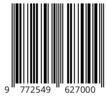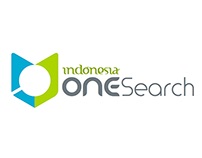Critical Discourse Analysis of Ahok's Speech in Kepulauan Seribu
Abstract
The background of this research comes from a controversial speech of Ahok. Speech delivered in the Kepulauan Seribu must be seen from the capacity of Ahok as the head of a region that has its own power and ideology. This research are not intended to see the true and false aspects of Ahok's speech that alludes to Surah Al-maidah verse 51, but this study aims to: (1) analyze ideological discourse; (2) analyze discourse and power relations; and (3) analyzing the implicatures that emerged from Ahok's speech in Kepulauan Seribu. The approach used in this research is critical discourse analysis. Sources of data in this study is the video of Ahok's speech in Kepulauan Seribu. The research data is a fragment of transcription of speech Ahok. The video of the speech is downloaded from the Youtube page. The analysis is not only in the textual aspect but also on the contextual aspect. The results of this study can be concluded that there are: (1) elements of Islamic ideology and the ideology of feminism in Ahok's speech; (2) power relations in Ahok's speech; (3) implicatures as a model of meaning implied in Ahok's speech.
Keywords
Full Text:
PDFReferences
Alie, M. (2013). Pemasaran politik di era multi media. Jakarta: Mizan Publika.
Asmara, R. (2016). Strategi kebahasaan Presiden Jokowi dalam menanamkan ideologi dan manifesto pemerintahan. LITERA, 15(2), 379-388.
Ayuningtias, D.I., & Hartanto, E.C.S. (2014). Pidato politik di Indonesia: sebuah kajian wacana kritis. Prosidi, 3(1), 25-38.
Fairclough, N. (2003). Discourse analysis: Textual analysis for social research. London: Routledge.
Fairclough, N. (1995). Discourse and social change. Cambridge: Blackwell Publisher.
Fairclough, N. (1995). Critical discourse analysis: the critical study of language. London and New York: Longman Inc.
Jorgensen, M.W., & Phillips, L.J. (2001). Discourse analysis: theory and method, alih bahasa Imam Suyitno, Lilik Suyitno & Suwarna. Yogyakarta: Pustaka Pelajar.
Karlberg, M. (2005). The power of discourse and the discourse of power: pursuing peace through discourse intervention. International Journal of Peace Studies, 10(1), 1-23.
Kridalaksana, H. (2008). Kamus linguistik (ed. IV). Jakarta: Gramedia Pustaka Utama.
Mulyana. (2004). Kajian wacana: teori, metode & aplikasi prinsip-prinsip analisis wacana. Yogyakarta: Tiara Wacana.
Nababan, P. J. W. (1987). Ilmu pragmatik: ilmu dan penerapannya. Jakarta: Depdikbud.
Norton, B. (1997). Language, identity, and the ownership of English. TESOL Quarterly, 31(3), 409-429.
Rogers, R., Malancharuvil-Berkes, E., Mosley, M., Hui, D., & Joseph, G.O. (2005). Critical discourse analysis in education: A review of literature. Review of Educational Research, 75(3), 365-416.
Sidabutar, S.C. (2014). Pencitraan politik Abu Rizal Bakrie dalam teks pidato mendaki semeru dan teks pidato Indonesia dalam mimpi saya. Jurnal E-Komunikasi, 2(2), 1-11.
Ulinnuha, R., Udasmoro, W., & Wijaya, Y. (2013). Critical discourse analysis: Theory and method in social and literary framework. Indonesian Journal of Applied Linguistics, 2(2), 262-274.
Van Dijk, T. A. (1995). Aims of critical discourse analysis. Japanese Discourse, 1(1), 17-27.
DOI: https://doi.org/10.31002/transformatika.v2i1.555
DOI (PDF): https://doi.org/10.31002/transformatika.v2i1.555.g501
Refbacks
- There are currently no refbacks.
Copyright (c) 2018 TRANSFORMATIKA: JURNAL BAHASA, SASTRA, DAN PENGAJARANNYA

This work is licensed under a Creative Commons Attribution-ShareAlike 4.0 International License.


_(2)_.png)
.png)
_.png)
.png)
.png)
















